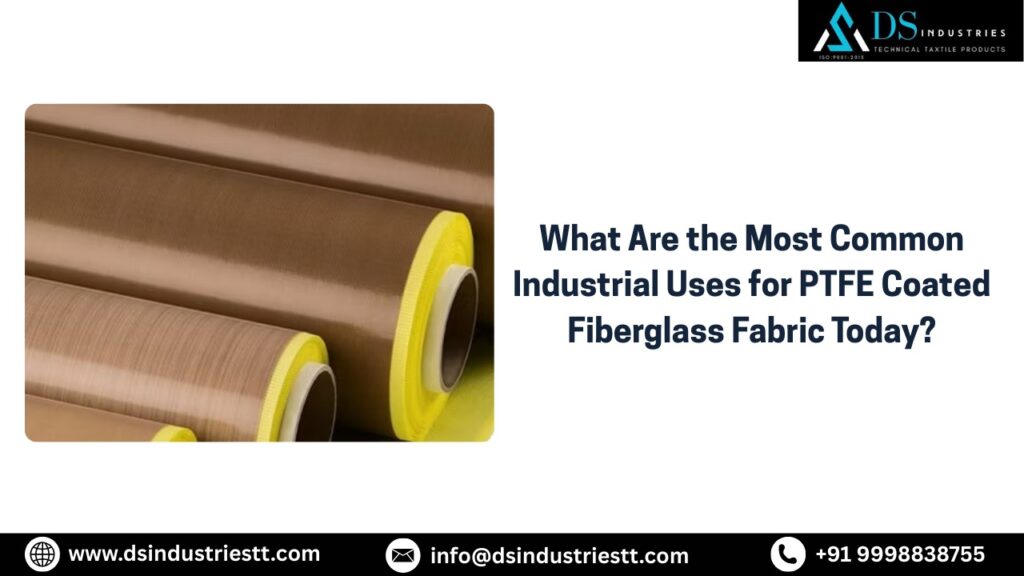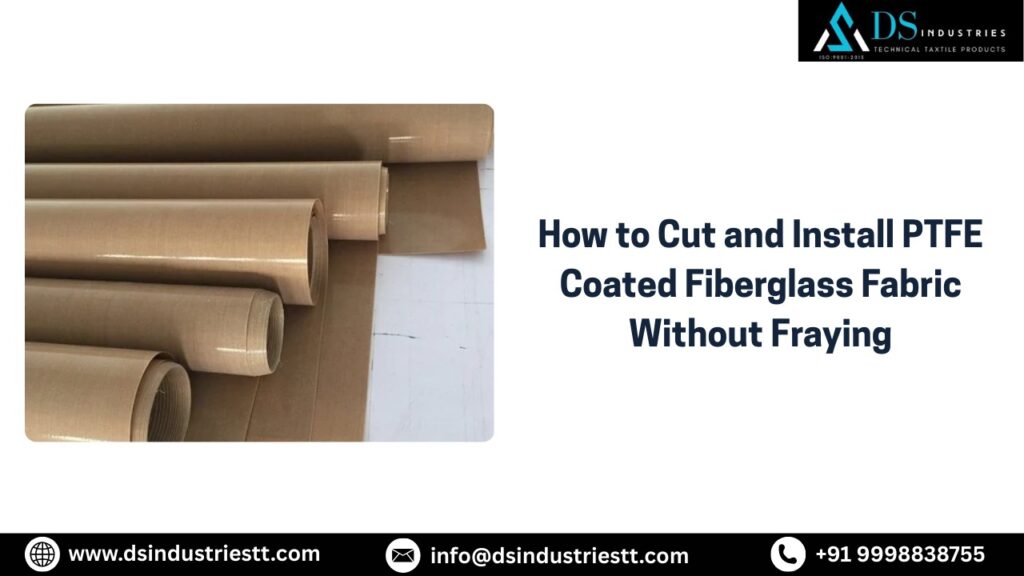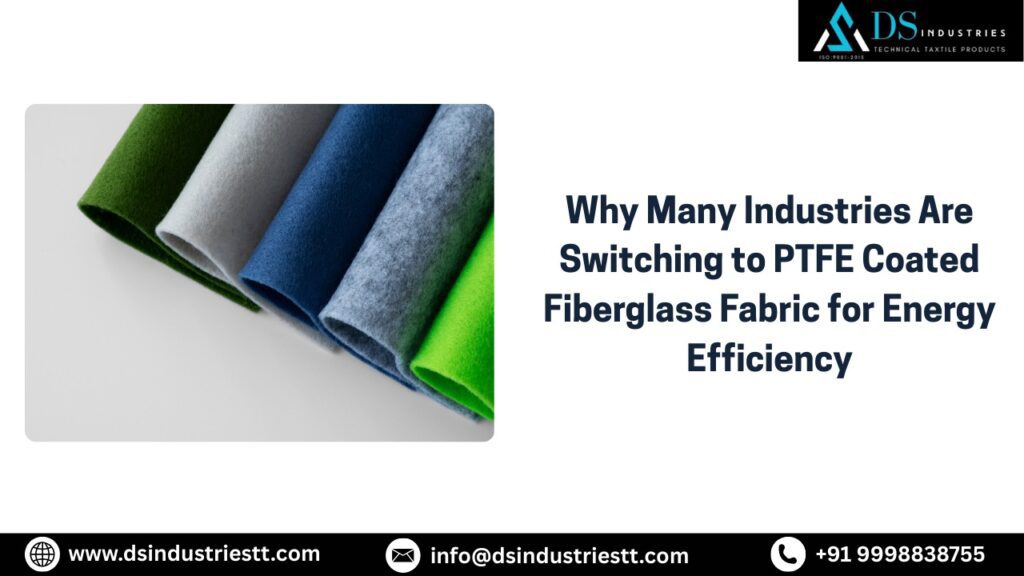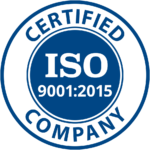What Are the Most Common Industrial Uses for PTFE Coated Fiberglass Fabric Today?

PTFE coated fiberglass fabric has become an essential material in various industrial sectors, thanks to its exceptional durability, non-stick properties, chemical resistance, and high-temperature tolerance. The unique combination of fiberglass and polytetrafluoroethylene (PTFE) offers a lightweight yet robust solution that excels in demanding environments. From food processing to aerospace, PTFE coated fiberglass fabric is trusted for both performance and longevity. In this blog, we will explore the most common and impactful industrial uses of PTFE coated fiberglass fabric today. 1. Food Processing and Packaging Industry One of the leading industries benefiting from PTFE coated fiberglass fabric is food processing. Due to its non-stick surface and heat resistance, it is widely used in: Its FDA-compliant variants make it a safe and sanitary choice for direct contact with food products. 2. Packaging Industry PTFE coated fiberglass fabric plays a crucial role in automated packaging machines, especially those involving heat sealing. It is used in: The anti-friction, non-stick nature enhances machine efficiency while minimizing maintenance. 3. Textile and Garment Industry In textile and garment manufacturing, PTFE coated fiberglass fabric finds applications in: Its durability under repeated thermal cycles makes it an ideal choice in high-speed garment production. 4. Aerospace and Aviation PTFE coated fiberglass fabric is highly valued in aerospace and aviation due to its high performance in extreme conditions. Key applications include: Its flame-retardant and chemically inert properties are vital for safety-critical aerospace applications. 5. Electrical and Electronics Industry The electrical insulation capabilities of PTFE-coated fiberglass fabric make it useful in: Its stability in high-voltage and high-temperature environments makes it reliable in electronic manufacturing and assembly. 6. Solar and Renewable Energy In the solar panel manufacturing process, PTFE coated fiberglass fabric is often used as: It supports clean, efficient energy production through its reliability in critical lamination applications. 7. Chemical Processing Industry PTFE’s superior chemical resistance makes the fabric suitable for: This fabric protects equipment and enhances operational safety in chemically harsh conditions. 8. Printing Industry In the printing industry, especially in screen and digital printing, PTFE coated fiberglass fabric is used for: Its smooth surface ensures consistent printing quality and minimal material handling issues. 9. Automotive Manufacturing Automotive applications of PTFE coated fiberglass fabric include: The fabric supports both performance and safety in automotive assembly lines. Conclusion PTFE coated fiberglass fabric continues to evolve with modern industrial needs. Its versatility, durability, and resistance to extreme conditions make it a favored material across diverse applications — from food processing and electronics to aerospace and chemical manufacturing. Industries requiring efficiency, cleanliness, and resilience have come to rely on this high-performance fabric. As technology advances, new applications will undoubtedly emerge, further reinforcing the importance of PTFE-coated fiberglass fabric in industrial innovation.
How to Cut and Install PTFE Coated Fiberglass Fabric Without Fraying

PTFE coated fiberglass fabric is widely used in industrial applications due to its excellent heat resistance, chemical resistance, non-stick surface, and mechanical strength. Whether used for insulation covers, conveyor belts, or protective barriers, proper cutting and installation are essential to maintain the material’s performance and prevent fraying. Fraying can lead to edge breakdown, contamination, and reduced durability. Fortunately, with the right tools and techniques, you can cut and install PTFE coated fiberglass fabric cleanly and efficiently. Here’s a step-by-step guide to help you get it right. 1. Choose the Right Tools To ensure a clean cut without fraying, use sharp tools designed for cutting fiberglass fabric: Avoid dull blades or utility knives, which may tear or damage the fabric. 2. Prepare the Work Area Before cutting, prepare a clean, flat surface. Use a non-slip cutting mat to stabilize the material and protect your tools. Mark the fabric lightly using a chalk line or fabric marker—avoid pens or inks that may damage or stain the PTFE surface. 3. Use Edge Sealing Techniques If you’re not using a hot knife, consider applying edge sealing methods after cutting: 4. Proper Installation When installing PTFE coated fiberglass fabric, consider the following tips: Always follow manufacturer guidelines regarding temperature tolerance and installation conditions. 5. Maintenance Tips To keep the fabric in good shape post-installation: Conclusion Cutting and installing PTFE coated fiberglass fabric without fraying is simple when you use the right tools and follow proper techniques. Whether in industrial, commercial, or custom applications, these steps help ensure a clean, professional finish and maximize the lifespan of this high-performance material. FAQ : 1. What is the best way to cut PTFE coated fiberglass fabric?Using a hot knife or heated blade is the best method. It cuts and seals the edges simultaneously, preventing fraying and maintaining the fabric’s durability and clean finish. 2. Can I use regular scissors to cut PTFE coated fiberglass fabric?Yes, but it’s not ideal. Heavy-duty, Teflon-coated scissors can work for small jobs, but they may cause frayed edges. For best results, use a hot knife or apply edge sealant after cutting. 3. How do I prevent the fabric from fraying after cutting?Use a hot knife during cutting, or apply PTFE-coated edge sealing tape or high-temperature silicone adhesive on the cut edges to keep the fiberglass from unraveling during use. 4. What surface should I use while cutting the fabric?Always work on a flat, stable surface like a cutting mat. It provides grip, protects tools, and ensures accurate, clean cuts without slipping or damaging the fabric. 5. How should I install PTFE coated fiberglass fabric?Avoid overstretching the fabric. Use grommets, clamps, or reinforced edges for secure mounting. Maintain even tension across the surface to prevent wrinkles and edge damage during installation. 6. Is it necessary to seal the edges after cutting?Yes, especially if you don’t use a hot knife. Sealing prevents fiber shedding, fraying, and contamination, extending the life and performance of the fabric in industrial applications.
Why Many Industries Are Switching to PTFE Coated Fiberglass Fabric for Energy Efficiency

In the quest for greater sustainability and reduced operational costs, industries across the globe are adopting innovative materials that offer both performance and efficiency. One such material gaining rapid traction is PTFE coated fiberglass fabric. Known for its durability, thermal stability, and low energy requirements, PTFE coated fiberglass is increasingly being used to improve energy efficiency across multiple sectors. Let’s explore why this fabric is becoming a go-to solution for energy-conscious industries. 1. Excellent Thermal Insulation PTFE (Polytetrafluoroethylene) coated fiberglass fabric is highly resistant to extreme temperatures—often up to 260°C (500°F)—without compromising its structural integrity. This makes it ideal for applications such as heat sealing, insulation covers, drying tunnels, and protective thermal barriers. By providing a robust insulating layer, PTFE-coated fabric helps retain heat within industrial processes. This results in reduced heat loss and more consistent internal temperatures, ultimately leading to lower energy consumption and increased system efficiency. 2. Low Friction and Non-Stick Properties One of PTFE’s signature traits is its low coefficient of friction, which means less resistance during operation. This translates into reduced mechanical effort and energy needed in processes involving movement—such as conveyor belts or textile processing lines. Its non-stick surface also ensures that materials glide smoothly across the surface, preventing product buildup and minimizing the need for frequent cleanups. Reduced cleaning means less downtime and lower energy costs associated with cleaning systems or stopping production lines. 3. Chemical and Moisture Resistance In industries dealing with harsh chemicals or humid conditions, such as chemical processing, food production, and pharmaceuticals, PTFE coated fiberglass fabric acts as a highly resistant barrier. It doesn’t degrade easily, which not only extends the material’s life span but also reduces the energy and resources needed for frequent replacements or repairs. 4. Lightweight Yet Durable Despite being lightweight, PTFE coated fiberglass fabric is incredibly strong and durable. Its high tensile strength allows it to withstand mechanical stress without tearing or stretching, meaning less wear and tear and longer service life. A longer lifespan means fewer replacements and a lower overall energy footprint over time—especially when compared to heavier or less efficient alternatives. 5. Versatile Applications Across Industries From automotive and aerospace to packaging, textiles, and food processing, this fabric’s versatility allows it to be used in a variety of energy-intensive environments. Whether used in curtains, conveyor belts, gaskets, or thermal covers, its ability to perform under pressure while conserving energy makes it a highly attractive option. Conclusion As industries seek sustainable ways to cut costs and reduce their environmental impact, materials like PTFE coated fiberglass fabric are proving to be game changers. Offering superior heat resistance, low energy consumption, and long-term durability, it aligns perfectly with the global push toward energy efficiency. It’s no wonder many industries are making the switch. FAQ 1. What is PTFE coated fiberglass fabric?PTFE coated fiberglass fabric is a high-performance material made by coating woven fiberglass with PTFE (Polytetrafluoroethylene), offering excellent heat resistance, durability, and non-stick properties. It’s used in various industrial applications to improve energy efficiency and operational reliability. 2. How does PTFE coated fabric improve energy efficiency?Its thermal insulation properties reduce heat loss in high-temperature processes, helping industries maintain consistent internal temperatures. This significantly lowers energy consumption in operations like drying, curing, or sealing. 3. Which industries benefit most from this fabric?Industries such as food processing, packaging, chemical, textiles, and aerospace benefit the most. These sectors rely on heat-intensive processes, making PTFE coated fiberglass fabric ideal for reducing energy waste and enhancing productivity. 4. Is PTFE coated fiberglass fabric durable?Yes, it offers excellent durability. The combination of fiberglass strength and PTFE’s chemical resistance ensures long service life, reduced wear and tear, and fewer replacements—saving energy and material costs over time. 5. Can it withstand extreme temperatures?Absolutely. PTFE coated fiberglass fabric can withstand temperatures up to 260°C (500°F), making it perfect for thermal insulation, conveyor systems, and protective barriers in high-heat industrial environments. 6. Does using PTFE coated fabric reduce maintenance?Yes. Its non-stick surface prevents buildup of materials, reducing the need for frequent cleaning and minimizing downtime. This leads to lower energy and labor costs in maintenance-heavy applications.


